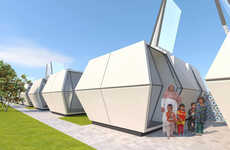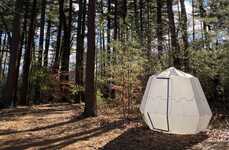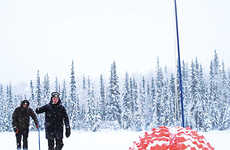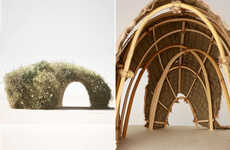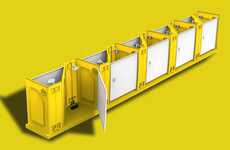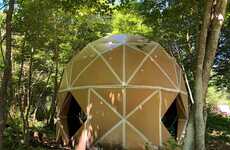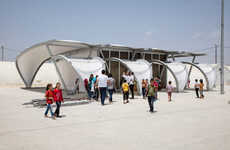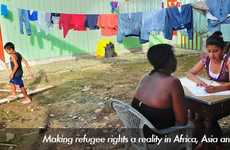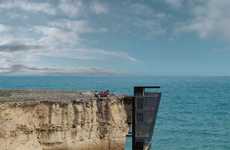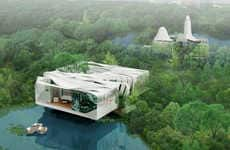
Weaving a Home Proposes an Efficient Shelter for Displaced Families
Amelia Roblin — April 8, 2014 — Eco
References: abeerseikaly & tuvie
The Weaving a Home project explored the ways in which families and entire communities could be offered life's most basic comforts in the event of geographic displacement. Abeer Seikaly came up with a design that's taken inspiration from woven baskets, paper lanterns and snakeskin for an intriguing outcome that's lightweight, compact, portable and offers a quality level of protection.
Refugees of war and natural disasters could unfold the tent easily to expand its accordion-style walls, coming to form an abode in the shape of an igloo. Its skin would be made from a framework of sinuous structural tubing that would be covered by weatherproof fabric. Pockets in the exterior are optimized for heat absorption and ventilation. Weaving a Home would harvest a small amount of energy to store in its battery, plus it would collect rainwater for drinking and bathing.
Refugees of war and natural disasters could unfold the tent easily to expand its accordion-style walls, coming to form an abode in the shape of an igloo. Its skin would be made from a framework of sinuous structural tubing that would be covered by weatherproof fabric. Pockets in the exterior are optimized for heat absorption and ventilation. Weaving a Home would harvest a small amount of energy to store in its battery, plus it would collect rainwater for drinking and bathing.
Trend Themes
1. Portable Refuges - The development of movable and compact shelters for disaster-stricken areas and refugee camps.
2. Weatherproof Fabrics - The creation of textile fabrics that can withstand harsh weather conditions and provide long-lasting protection.
3. Sustainable Living - The promotion of eco-friendly and sustainable living through design innovations in architecture and structural engineering.
Industry Implications
1. Textile Manufacturing - Innovations in textile manufacturing technologies to produce weatherproof and durable fabrics that can adapt to different weather conditions.
2. Architecture and Engineering - Design and engineering companies can look for ways to incorporate sustainability into their projects and develop shelters that are more durable, resilient, and cost-effective.
3. Renewable Energy - Innovations in renewable energy technologies to provide self-sustaining power solutions in remote locations and areas with limited access to electricity.
6.4
Score
Popularity
Activity
Freshness

